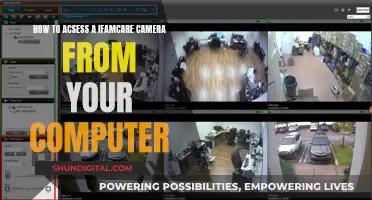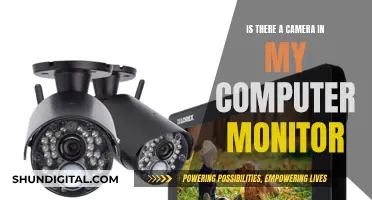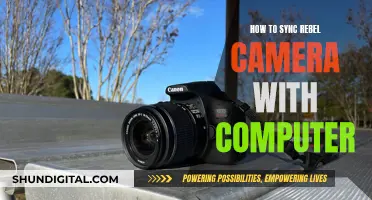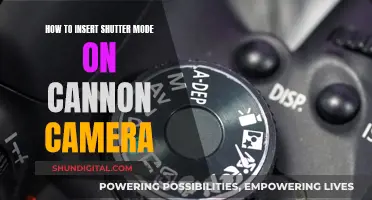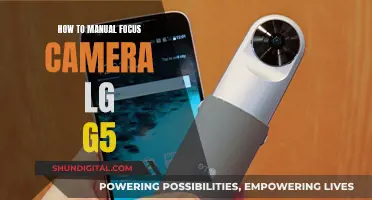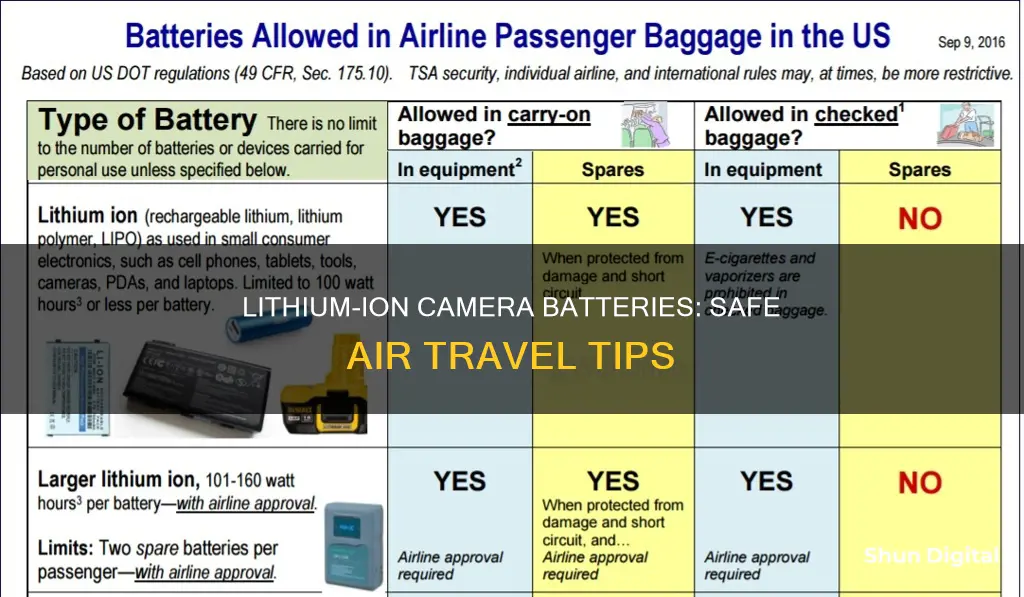
Lithium-ion camera batteries are allowed on flights, but there are specific rules and guidelines that must be followed to ensure safety. These batteries are considered dangerous goods due to their potential to short-circuit or catch fire. Here's an overview of the topic, including regulations, packing tips, and weight considerations for carrying spare lithium-ion camera batteries on flights.
| Characteristics | Values |
|---|---|
| Type of battery | Lithium-ion |
| Battery capacity | Up to 100Wh: no limit on the number of batteries. 101-160Wh: up to 2 batteries. |
| Battery weight | N/A |
| Battery packaging | Must be individually protected to prevent short circuits. |
| Battery placement | Carry-on baggage only. |
| Battery terminals | Should be protected with tape or kept in the original packaging. |
| Battery transportation | Should be carried by the passenger and not placed in checked luggage. |
What You'll Learn

Lithium-ion batteries must be in carry-on luggage
Lithium-ion batteries are commonly used in modern gadgets like cameras, cell phones, laptops, tablets, and more. Due to their potential to short-circuit or catch fire, they are considered dangerous goods. As a result, there are strict guidelines for carrying lithium-ion batteries on airplanes.
Firstly, it is important to note that lithium-ion batteries are permitted to be carried on flights. However, they must be placed in carry-on luggage and not checked baggage. This regulation is in place because, in the event of a fire, cabin crew and passengers can intervene and stop the fire. If a lithium-ion battery catches fire in the cargo hold, there is no one available to put out the fire, which could result in the entire cargo hold going up in flames.
To carry lithium-ion batteries in your carry-on luggage, you must take certain precautions. Firstly, the batteries must be protected from damage and accidental activation. This includes ensuring that the batteries do not come into contact with metal items, which could result in a short circuit. To prevent this, you can either store the batteries in their original packaging or cover the charging interface or terminals with tape. Additionally, it is recommended to place each battery in its own protective case, plastic bag, or package to ensure they do not come into contact with other batteries or metal objects.
It is also important to note that there are size and quantity restrictions for lithium-ion batteries. For lithium-ion batteries, the watt-hour rating per battery must not exceed 100 Wh. However, with airline approval, passengers can carry up to two spare lithium-ion batteries with a rating of 101-160 Wh. There is no restriction on the number of small dry-cell batteries you can carry, but for lithium-ion batteries, each passenger is limited to a maximum of two spare batteries.
In summary, when carrying lithium-ion camera batteries on a flight, it is essential to place them in your carry-on luggage and take the necessary precautions to prevent damage, accidental activation, and short circuits. By following these guidelines, you can ensure the safe transportation of your lithium-ion camera batteries.
Charging Your A6000: A Step-by-Step Guide to Powering Your Camera
You may want to see also

Tape over charging ports to prevent short circuits
When flying with lithium-ion camera batteries, it is important to take precautions to prevent short circuits, as this could lead to a fire. One effective way to do this is by taping over the charging ports of the batteries. Here are some detailed instructions and guidelines on how to properly tape the charging ports:
- Choose an appropriate tape: It is recommended to use electrical insulating tape, as it does not leave a sticky residue like other types of tape. Yellow or green tape is ideal, as the colour makes it obvious that the battery contacts have been taped over.
- Clean the battery terminals: Before applying the tape, ensure that the battery terminals are clean and free of any dirt or debris. This will help ensure a secure adhesion.
- Cut the tape to size: Cut a piece of tape that is slightly larger than the battery terminal. This will ensure that the entire terminal is covered.
- Apply the tape: Carefully place the tape over the terminal, smoothing out any air bubbles. Ensure that the tape is securely adhered to the terminal and that there are no gaps or loose edges.
- Repeat for each battery: If you are travelling with multiple lithium-ion camera batteries, repeat the above steps for each battery to ensure they are all properly protected.
By taking the time to properly tape the charging ports of your lithium-ion camera batteries, you can help ensure a safe and worry-free travel experience. It is also important to follow other guidelines and regulations for travelling with lithium-ion batteries, such as keeping them in your carry-on baggage and protecting them from damage.
Xomodo Wireless Cameras: How Long Does the Charge Last?
You may want to see also

Only two spare lithium-ion batteries allowed
When flying with lithium-ion camera batteries, it's important to be aware of the specific rules and regulations outlined by aviation authorities such as the FAA, TSA, and EASA. These regulations are in place to ensure the safety of flights, as lithium-ion batteries have the potential to short-circuit or catch fire and are therefore considered dangerous goods.
- Quantity Restriction: Each passenger is limited to carrying only two spare lithium-ion camera batteries on the airplane. This restriction is in place due to the fire hazard associated with lithium-ion batteries.
- Watt-Hour Limit: The two spare lithium-ion batteries you are allowed to carry should not exceed 100 watt-hours per battery. This limit covers most lithium-ion batteries used in common electronic devices, including cameras.
- Carry-on Baggage Only: Spare lithium-ion batteries must be carried in your carry-on baggage and not in checked luggage. This is because, in the event of a fire, cabin crew and passengers can intervene and stop the fire.
- Protection from Damage: It is crucial to protect lithium-ion batteries from damage during transport. This includes preventing crushing, puncturing, or applying high degrees of pressure to the batteries, as this can cause internal short circuits and overheating.
- Preventing Short Circuits: Take measures to prevent short circuits by insulating battery terminals. You can do this by keeping the batteries in their original retail packaging or placing each battery in its own protective case, plastic bag, or package. Alternatively, you can place tape across the battery's contacts.
- Safe Packing: When packing your spare batteries, consider placing each battery in a separate bag to provide further protection and prevent accidental activation. This will also make it easier for you to access them during security checks.
- Battery Condition: Ensure that the batteries you are carrying are in good condition and show no signs of damage, such as swelling or leakage. Damaged or faulty batteries should be disposed of properly and not brought on board.
- Airline Policies: While the TSA and aviation authorities have general guidelines, it is important to check with your specific airline for any additional restrictions or requirements they may have regarding spare lithium-ion batteries. Some airlines may have their own limitations, so it is wise to confirm before your trip.
Vive Cameras: Battery or Plug-in Power?
You may want to see also

Keep batteries in original packaging or separate bags
When packing your lithium-ion camera batteries for a flight, it is important to keep them in their original packaging or in separate bags. This is a crucial step to ensure the safety of the flight and comply with aviation regulations. Here are some detailed instructions to follow:
Firstly, if you still have the original packaging for your lithium-ion camera batteries, it is highly recommended to store them in those boxes. Original packaging is designed to protect the batteries from damage and short circuits, which can lead to fire hazards. The packaging securely holds the batteries and covers the charging interface or terminals, preventing accidental activation.
In the case that you no longer have the original packaging, it is essential to take alternative measures to protect the battery terminals. One option is to place each battery in its own protective case or plastic bag. This separation ensures that the batteries do not come into contact with each other or with metal objects, reducing the risk of short circuits. You can also use electrical tape to cover the battery terminals directly, providing an extra layer of insulation.
Additionally, when packing your spare lithium-ion camera batteries, it is advisable to use dedicated bags or pouches that provide snug compartments for each battery. This prevents the batteries from shifting during transport, reducing the risk of damage or crushing. It is important to remember that damaged batteries can short circuit and overheat, leading to potential fire hazards.
Furthermore, when travelling with lithium-ion camera batteries, always carry them in your hand luggage or carry-on baggage. Never pack them in checked luggage or baggage that will be stored in the cargo hold. Keeping your batteries with you in the cabin allows for quick access and ensures that any potential issues can be promptly addressed by the cabin crew.
By following these instructions and keeping your spare lithium-ion camera batteries in their original packaging or separate bags, you can help ensure a safe and compliant travel experience. Remember to also check the specific guidelines provided by your airline, as they may have additional requirements or restrictions. Safe travels!
Airline-Approved: Small Cameras with Lithium Batteries
You may want to see also

Batteries must be under 100Wh
When flying with lithium-ion camera batteries, it's crucial to understand and adhere to the regulations to ensure safe and smooth travel. Here are some detailed guidelines and instructions regarding the requirement that batteries must be under 100Wh:
Understanding the 100Wh Limit
The 100Wh limit is a safety regulation imposed by aviation authorities, such as the Federal Aviation Administration (FAA) and the Transportation Security Administration (TSA), to mitigate the risks associated with lithium-ion batteries. Lithium-ion batteries have the potential to short-circuit or catch fire, hence the strict rules for their transportation. The watt-hour rating of a battery is calculated by multiplying its nominal voltage (in volts) by its capacity (in ampere-hours). For example, a lithium-ion battery with a voltage of 7.2V and a capacity of 2.5Ah would have an energy rating of 18Wh, which is well below the 100Wh threshold.
Packing and Carrying Lithium-Ion Camera Batteries
When packing lithium-ion camera batteries for air travel, it's essential to follow these guidelines:
- Carry-On Only: Always carry your lithium-ion camera batteries in your carry-on luggage. Never pack them in checked baggage. This is because, in the event of a fire, having the batteries in the cabin allows cabin crew and passengers to intervene and address the issue promptly.
- Quantity Limit: Each passenger is typically allowed to carry a maximum of two spare lithium-ion camera batteries, each with a watt-hour rating of up to 100Wh.
- Protect Battery Terminals: To prevent short circuits, ensure that the battery terminals are protected. You can use the original packaging, which often has insulating covers, or place tape across the battery contacts to isolate the terminals.
- Prevent Damage: Do not carry damaged, swollen, or leaking batteries. Always inspect your batteries before travel and dispose of any that show signs of damage or leakage.
- Mark and Declare: Clearly mark your batteries and, if necessary, declare them during customs checks. This helps facilitate a smoother process and ensures compliance with regulations.
- Original Packaging: Whenever possible, keep spare batteries in their original retail packaging. This helps prevent unintentional activation or short-circuiting.
- Separate Bags: Consider storing each battery in its own protective case or plastic bag to provide further protection and make identification easier.
Exceptions and Additional Considerations
While the 100Wh limit covers most lithium-ion batteries used in common electronic devices, including cameras, there may be situations where you need to carry batteries with higher watt-hour ratings. With airline approval, you can transport lithium-ion batteries rated between 100Wh and 160Wh. However, these batteries may require additional labelling, packaging, and paperwork, and they must comply with the specific requirements of the airline you are travelling with.
Charging Camera Batteries: Camping Essentials for Photographers
You may want to see also
Frequently asked questions
Yes, you can carry lithium-ion camera batteries on a flight, but only in your carry-on luggage.
You can carry up to two spare lithium-ion camera batteries on a flight.
The watt-hour limit for lithium-ion camera batteries on a flight is 100 Wh. With airline approval, you can carry larger batteries of up to 160 Wh.
You should pack lithium-ion camera batteries in their original packaging or individually wrap each battery in a protective case, plastic bag, or tape to prevent short circuits.
Yes, lithium-ion camera batteries installed in devices are generally considered safe and can be carried in carry-on or checked baggage. However, it is recommended to carry them in carry-on baggage whenever possible.


